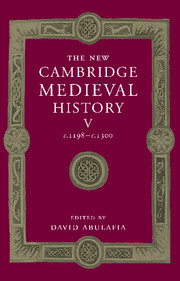
- Cited by 6
-
Cited byCrossref Citations
This Book has been cited by the following publications. This list is generated based on data provided by Crossref.
Bourin, Monique Carocci, Sandro Menant, François and To Figueras, Lluís 2011. Les campagnes de la Méditerranée occidentale autour de 1300 : tensions destructrices, tensions novatrices. Annales. Histoire, Sciences Sociales, Vol. 66, Issue. 3, p. 663.
Darwish, Mahmoud Ahmed 2016. Two Armenian Bibles with Arabic Influences of miniature painting (Gregor Tatevatsi 1346-1410). International Journal for Innovation Education and Research, Vol. 4, Issue. 8, p. 72.
Napolitano, David 2020. Information and Power in History. p. 39.
Wubs-Mrozewicz, Justyna 2020. The concept of language of trust and trustworthiness: (Why) history matters. Journal of Trust Research, Vol. 10, Issue. 1, p. 91.
Miller, Maureen C. 2023. Reframing the “Documentary Revolution” in Medieval Italy. Speculum, Vol. 98, Issue. 3, p. 673.
GRZYMALA-BUSSE, ANNA 2024. Tilly Goes to Church: The Religious and Medieval Roots of European State Fragmentation. American Political Science Review, Vol. 118, Issue. 1, p. 88.
- Publisher:
- Cambridge University Press
- Online publication date:
- March 2008
- Print publication year:
- 1999
- Online ISBN:
- 9781139055734
- Subjects:
- Area Studies, European History 1000-1450, British History: General Interest, History, European Studies
- Collection:
- Cambridge Histories - British & European History
- Series:
- The New Cambridge Medieval History (5)


